
Motion control and electronic systems manufacturer Helios Technologies (NYSE: HLIO) announced better-than-expected revenue in Q1 CY2025, but sales fell by 7.8% year on year to $195.5 million. The company expects next quarter’s revenue to be around $202 million, close to analysts’ estimates. Its non-GAAP profit of $0.44 per share was 21.5% above analysts’ consensus estimates.
Is now the time to buy Helios? Find out by accessing our full research report, it’s free.
Helios (HLIO) Q1 CY2025 Highlights:
- Revenue: $195.5 million vs analyst estimates of $188.4 million (7.8% year-on-year decline, 3.8% beat)
- Adjusted EPS: $0.44 vs analyst estimates of $0.36 (21.5% beat)
- Adjusted EBITDA: $33.8 million vs analyst estimates of $30.99 million (17.3% margin, 9.1% beat)
- Revenue Guidance for Q2 CY2025 is $202 million at the midpoint, roughly in line with what analysts were expecting
- Adjusted EPS guidance for Q2 CY2025 is $0.50 at the midpoint, below analyst estimates of $0.56
- Operating Margin: 8.7%, in line with the same quarter last year
- Free Cash Flow Margin: 6.6%, similar to the same quarter last year
- Market Capitalization: $924.6 million
“Our first quarter results demonstrated a better-than-expected start to the year and further validates our continued execution of our financial plans to drive operating leverage, improve our cash conversion cycle, reduce debt, and strengthen our earnings power. Thanks to the global Helios team for staying focused on our controllables, our Q1 results exceeded our plan and further strengthened our balance sheet. We achieved a 23% increase in our operating income in the quarter on $16 million in incremental sales over the fourth quarter of last year, which shows the incremental operating leverage from increased volume. Through this volatile macro environment, we are pulling the levers we believe position us well for the long-term. We remain focused on investing in innovation and bringing new products to market. Our 'in the region for the region' manufacturing strategy is paying off as we navigate the tariff landscape and work to maximize what we produce locally. Finally, we have also been examining our product portfolio with a broader look at our assets while streamlining the organization in some areas, and allocating resources where they can be better utilized to grow our go-to-market initiatives this year,” said Sean Bagan, President, Chief Executive Officer and Chief Financial Officer of Helios.
Company Overview
Founded on the principle of treating others as one wants to be treated, Helios (NYSE: HLIO) designs, manufactures, and sells motion and electronic control components for various sectors.
Sales Growth
Examining a company’s long-term performance can provide clues about its quality. Even a bad business can shine for one or two quarters, but a top-tier one grows for years. Luckily, Helios’s sales grew at a decent 8% compounded annual growth rate over the last five years. Its growth was slightly above the average industrials company and shows its offerings resonate with customers.
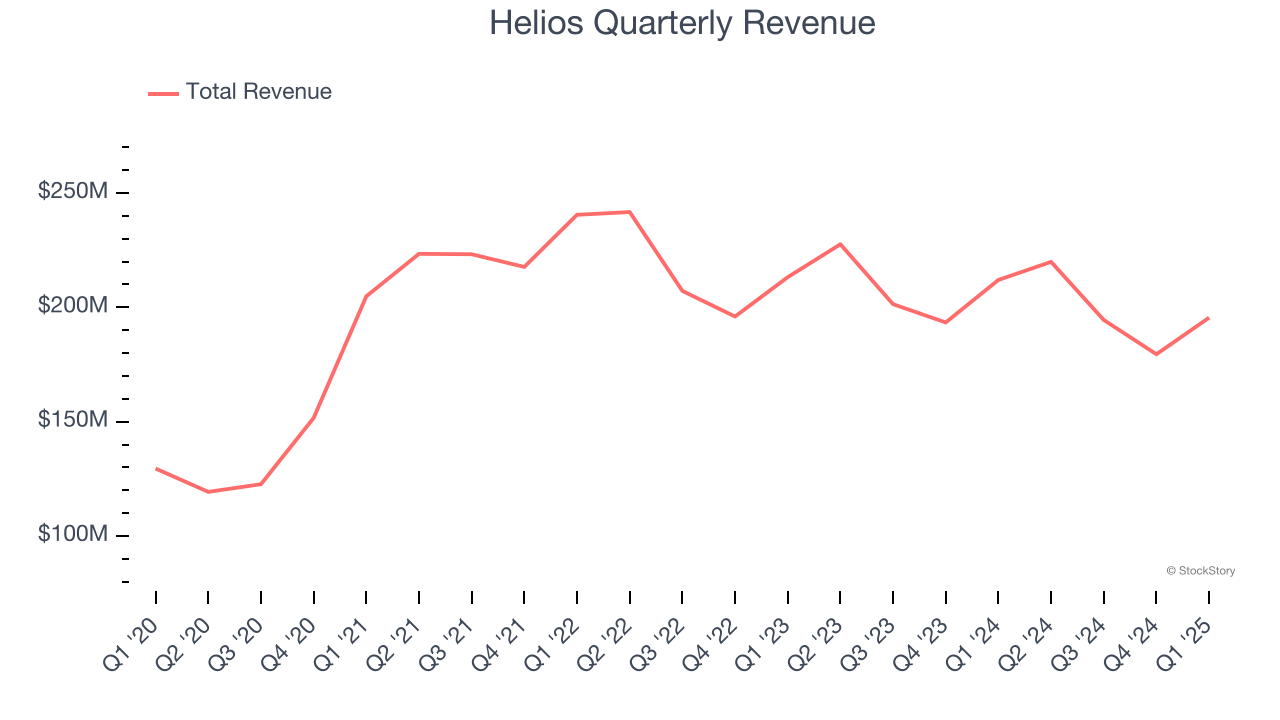
We at StockStory place the most emphasis on long-term growth, but within industrials, a half-decade historical view may miss cycles, industry trends, or a company capitalizing on catalysts such as a new contract win or a successful product line. Helios’s recent performance marks a sharp pivot from its five-year trend as its revenue has shown annualized declines of 4.1% over the last two years. 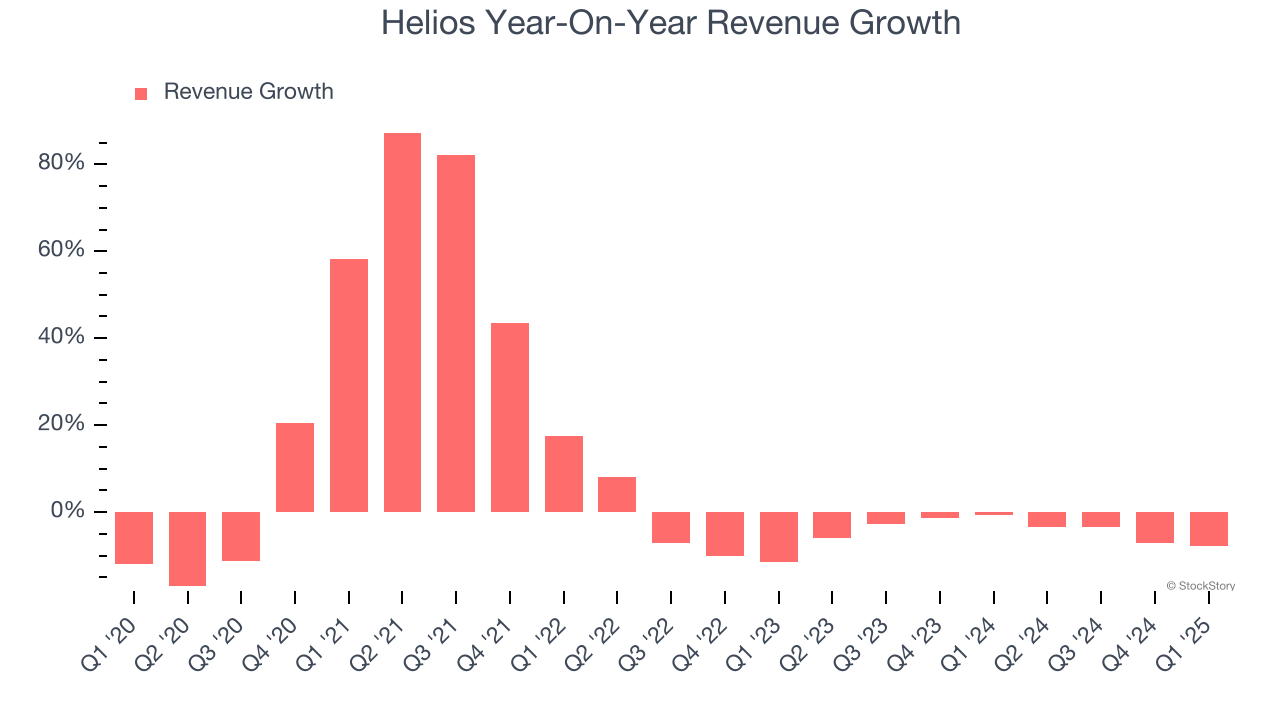
This quarter, Helios’s revenue fell by 7.8% year on year to $195.5 million but beat Wall Street’s estimates by 3.8%. Company management is currently guiding for a 8.1% year-on-year decline in sales next quarter.
Looking further ahead, sell-side analysts expect revenue to decline by 2.2% over the next 12 months. While this projection is better than its two-year trend, it's tough to feel optimistic about a company facing demand difficulties.
Today’s young investors won’t have read the timeless lessons in Gorilla Game: Picking Winners In High Technology because it was written more than 20 years ago when Microsoft and Apple were first establishing their supremacy. But if we apply the same principles, then enterprise software stocks leveraging their own generative AI capabilities may well be the Gorillas of the future. So, in that spirit, we are excited to present our Special Free Report on a profitable, fast-growing enterprise software stock that is already riding the automation wave and looking to catch the generative AI next.
Operating Margin
Operating margin is one of the best measures of profitability because it tells us how much money a company takes home after procuring and manufacturing its products, marketing and selling those products, and most importantly, keeping them relevant through research and development.
Helios has been an efficient company over the last five years. It was one of the more profitable businesses in the industrials sector, boasting an average operating margin of 12.8%. This result isn’t too surprising as its gross margin gives it a favorable starting point.
Looking at the trend in its profitability, Helios’s operating margin decreased by 3.4 percentage points over the last five years. This raises questions about the company’s expense base because its revenue growth should have given it leverage on its fixed costs, resulting in better economies of scale and profitability.
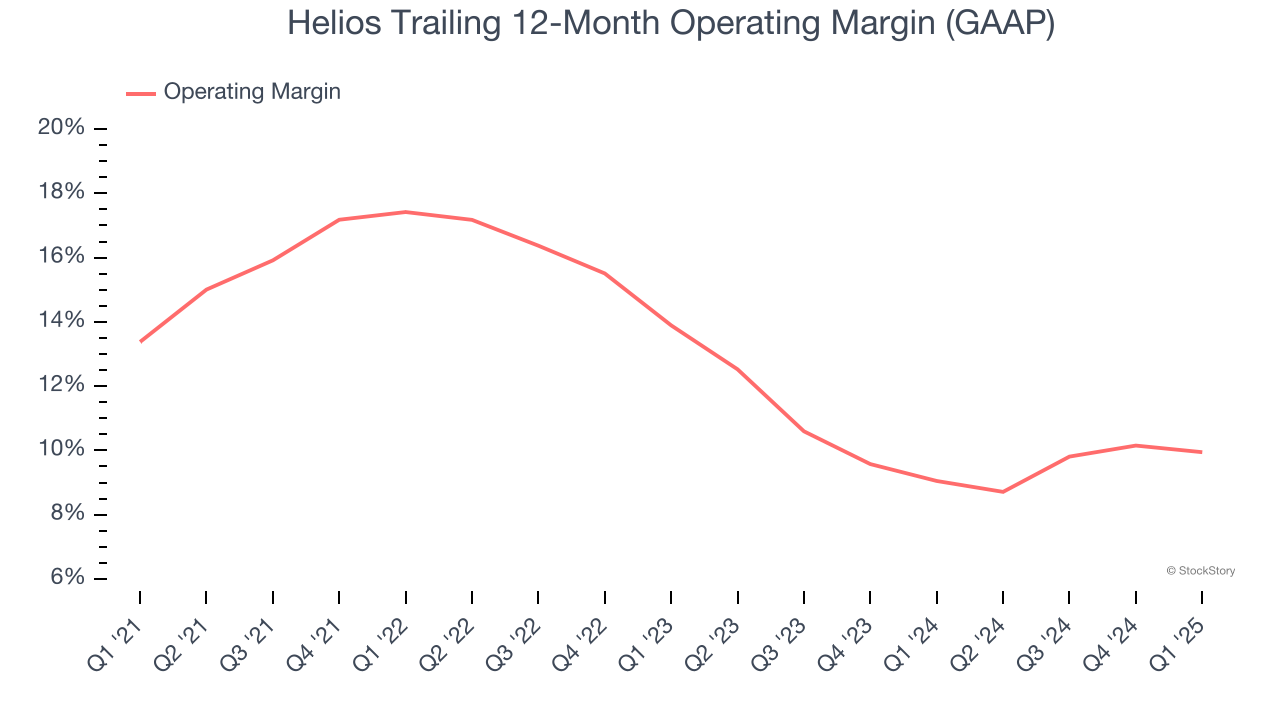
In Q1, Helios generated an operating profit margin of 8.7%, in line with the same quarter last year. This indicates the company’s cost structure has recently been stable.
Earnings Per Share
Revenue trends explain a company’s historical growth, but the long-term change in earnings per share (EPS) points to the profitability of that growth – for example, a company could inflate its sales through excessive spending on advertising and promotions.
Sadly for Helios, its EPS declined by 3.2% annually over the last five years while its revenue grew by 8%. This tells us the company became less profitable on a per-share basis as it expanded.
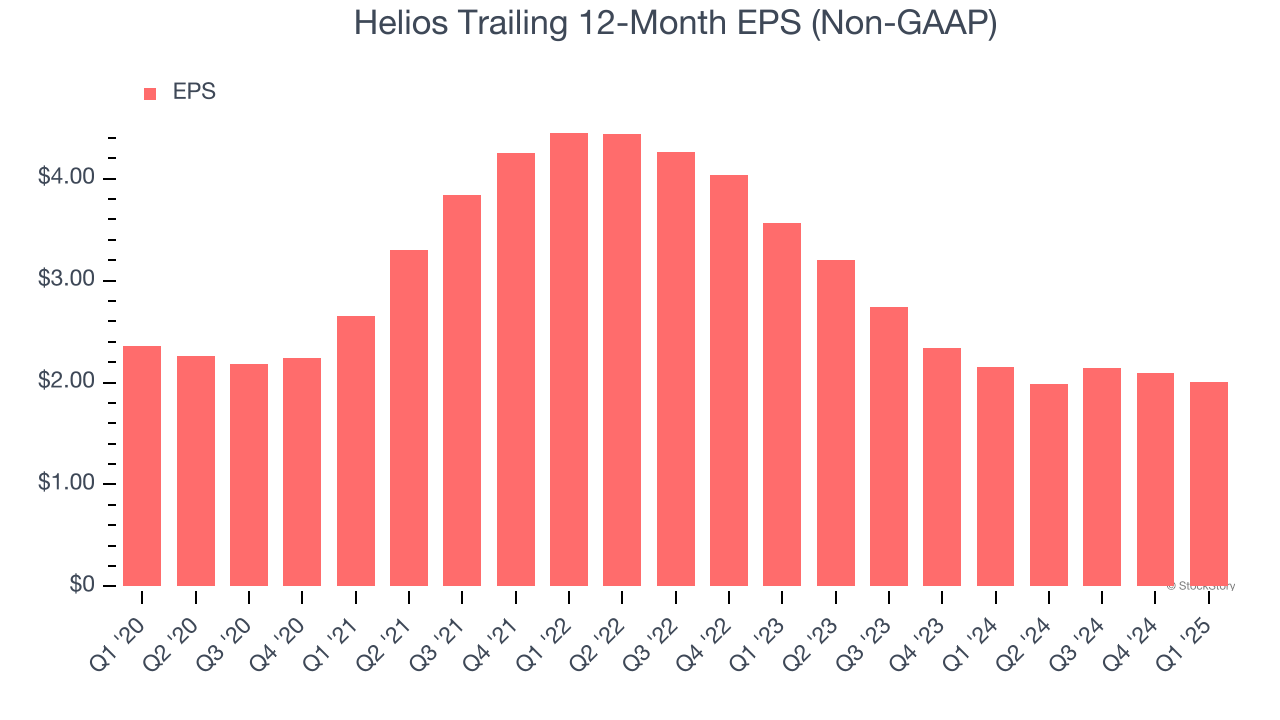
Diving into the nuances of Helios’s earnings can give us a better understanding of its performance. As we mentioned earlier, Helios’s operating margin was flat this quarter but declined by 3.4 percentage points over the last five years. Its share count also grew by 4.2%, meaning the company not only became less efficient with its operating expenses but also diluted its shareholders. 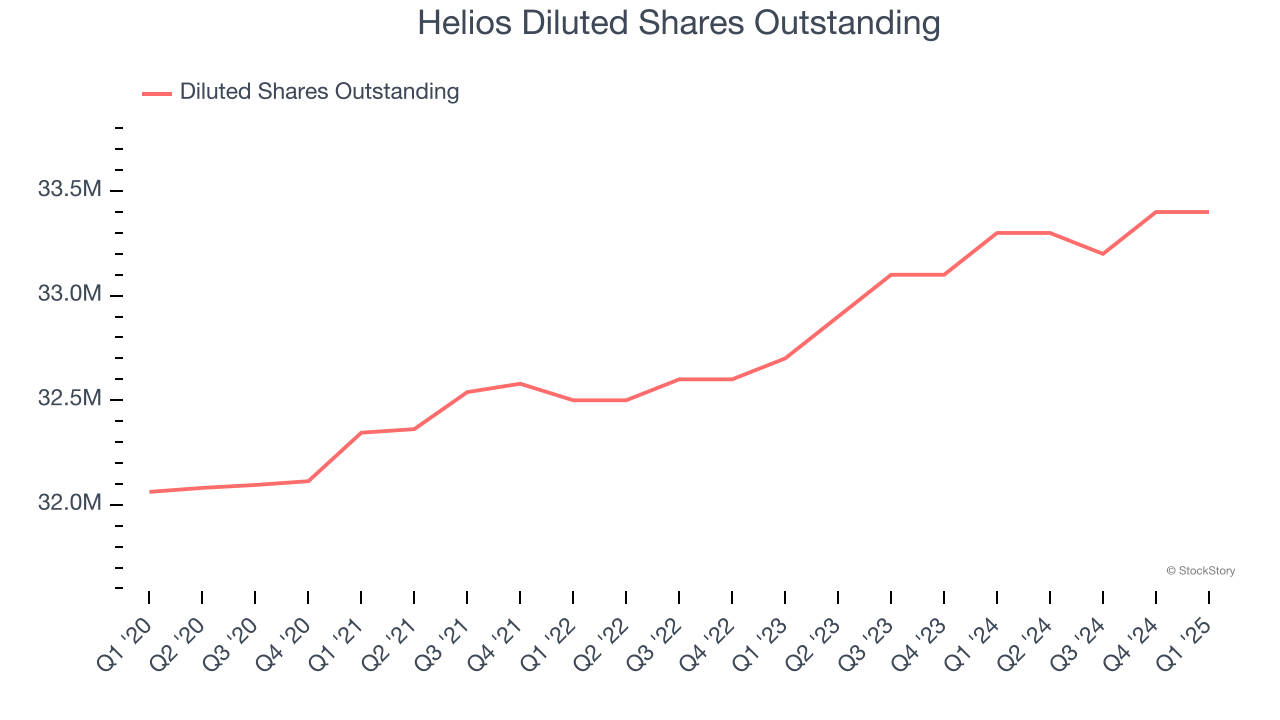
Like with revenue, we analyze EPS over a more recent period because it can provide insight into an emerging theme or development for the business.
For Helios, its two-year annual EPS declines of 25% show it’s continued to underperform. These results were bad no matter how you slice the data.
In Q1, Helios reported EPS at $0.44, down from $0.53 in the same quarter last year. Despite falling year on year, this print easily cleared analysts’ estimates. Over the next 12 months, Wall Street expects Helios’s full-year EPS of $2.01 to grow 15.6%.
Key Takeaways from Helios’s Q1 Results
We were impressed by how significantly Helios blew past analysts’ revenue, EPS, and EBITDA expectations this quarter. On the other hand, its EPS guidance for next quarter missed significantly. Still, we think this was a good print with some key areas of upside. The stock remained flat at $27.18 immediately following the results.
Helios put up rock-solid earnings, but one quarter doesn’t necessarily make the stock a buy. Let’s see if this is a good investment. We think that the latest quarter is only one piece of the longer-term business quality puzzle. Quality, when combined with valuation, can help determine if the stock is a buy. We cover that in our actionable full research report which you can read here, it’s free.






